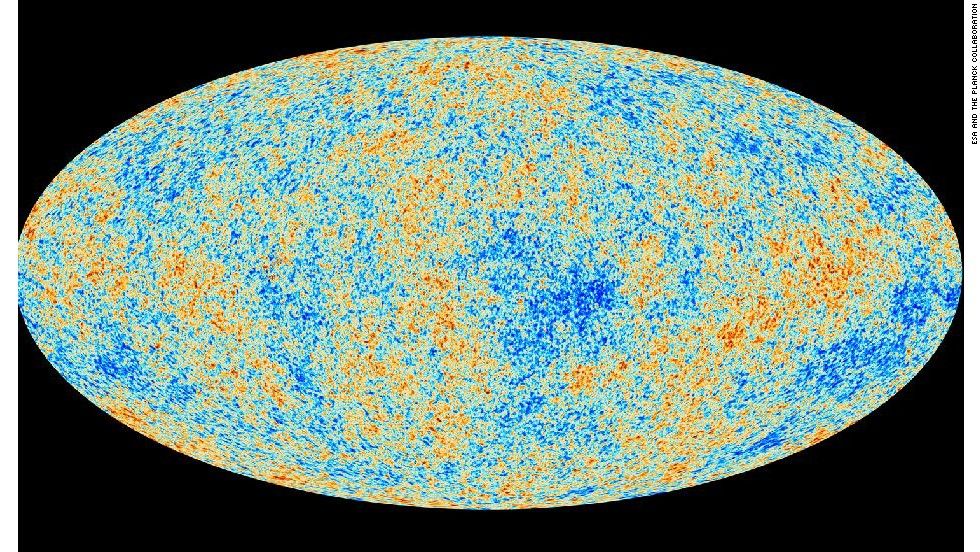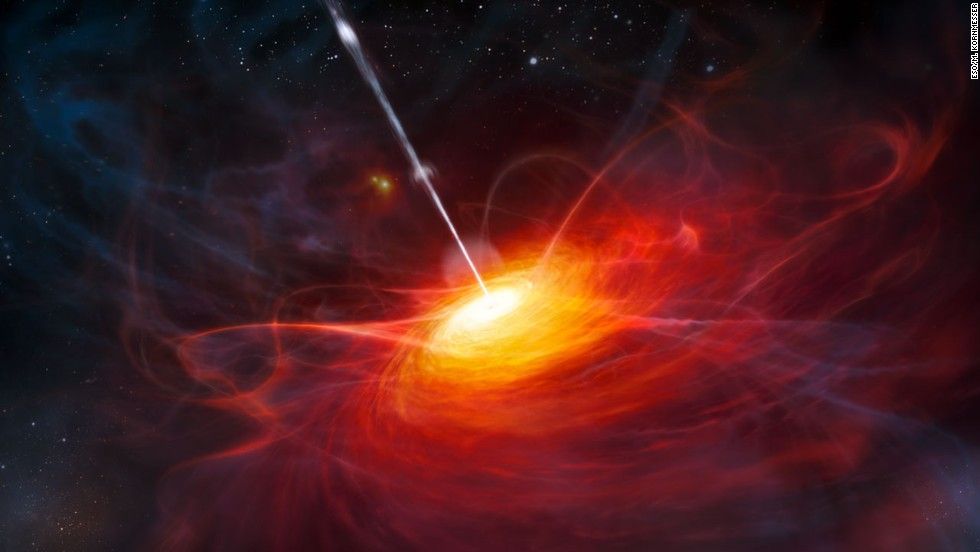At the end of last year, Made In Space made what was a huge achievement for 3D printing in space by sending their Zero G 3D printer, capable of 3D printing without gravity, to the International Space Station. There, it has 3D printed numerous components, including a now famous wrench and twenty-three other prints that have since returned to Earth for lab analysis. The ability to 3D print without gravity restraints will allow those aboard the ISS to 3D print tools and parts using raw material, preventing the need for direct shipments of such objects from Earth. This ability is an exciting one, but the true goal of NASA and Made In Space has been to 3D print in vacuum of space itself. Today, Made In Space has announced that such a feat has now been proven possible through a series of tests performed here on Earth.
Category: space

Slow death of Universe confirmed with precision
- The universe radiates only half as much energy as 2 billion years ago
- New findings establish cosmos’ decline with unprecedented precision
From CNN—The universe came in with the biggest bang ever. But now, with a drooping fizzle, it is in its swan song. The conclusion of a new astronomical study pulls no punches on this: “The Universe is slowly dying,” it reads.
Astronomers have believed as much for years, but the new findings establish the cosmos’ decline with unprecedented precision. An international team of 100 scientists used data from the world’s most powerful telescopes — based on land and in space — to study energy coming from more than 200,000 galaxies in a large sliver of the observable universe. [Full story below or at CNN.com]…
Based on those observations, they have confirmed the cosmos is radiating only half as much energy as it was 2 billion years ago. The astronomers published their study on Monday on the website of the European Southern Observatory.
The team checked the energy across a broad spectrum of lightwaves and other electromagnetic radiation and says it is fading through all wavelengths, from ultraviolet to far infrared.
Analysis across many wavelengths shows the universe’s electromagnetic energy output is dropping.
‘A cold, dark and desolate place’
At the ripe old age of nearly 13.8 billion years, the universe has arrived in its sunset years.
“The universe has basically sat down on the sofa, pulled up a blanket and is about to nod off for an eternal doze,” said astronomer Simon Driver, who led the team.
Death does not mean the universe will go away. It will still be there, but its stars and all else that produces light and stellar fire will fizzle out.
“It will just grow old forever, slowly converting less and less mass into energy as billions of years pass by until eventually, it will become a cold, dark and desolate place, where all of the lights go out,” said astronomer Luke Davies.
But don’t cry for the universe anytime soon. Astrophysicists say this will take trillions of years.
Bursting with energy
Go all the way back to its birth, and you find a vast contrast. In an infinitesimal fraction of a second, our entire cosmos blasted into existence in the Big Bang.
And the totality of the energy and mass in the universe originates from that moment, astronomers say.
Since that natal explosion, the cosmos has generated other sources of brilliant radiation — most notably stars — by converting some of the mass into energy when extreme gravity causes matter to burst into nuclear fusion.
But the universe is speckled by radiance from seething gas clouds, supernovas and, most spectacularly, the discs of hot matter that rotate around black holes to form quasars, which can be as bright as whole galaxies.
“While most of the energy sloshing around in the universe arose in the aftermath of the Big Bang, additional energy is constantly being generated by stars as they fuse elements like hydrogen and helium together,” Driver said.
Fizzling into space
The size and number of those sources of radiation so boggle the mind that it might be hard to imagine that the entirety of that vividness appears to be fading, as its energy flies off through space.
“This new energy is either absorbed by dust as it travels through the host galaxy, or escapes into intergalactic space and travels until it hits something, such as another star, a planet, or, very occasionally, a telescope mirror,” Driver said.
His team observed it from seven of the world’s mammoth telescopes spread out between Australia, the United States, Chile and Earth’s orbit. Many of the instruments specialize in receiving certain wavelengths of light and other electromagnetic waves.
Compiling the data from the collective wavelengths gives the scientists a more complete picture from across a broad spectrum of energy.
Their findings on the universe’s energy slump were part of the larger Galaxy And Mass Assembly, or GAMA, project to study how galaxies are formed. It has mapped out the position of 4 million galaxies so far.
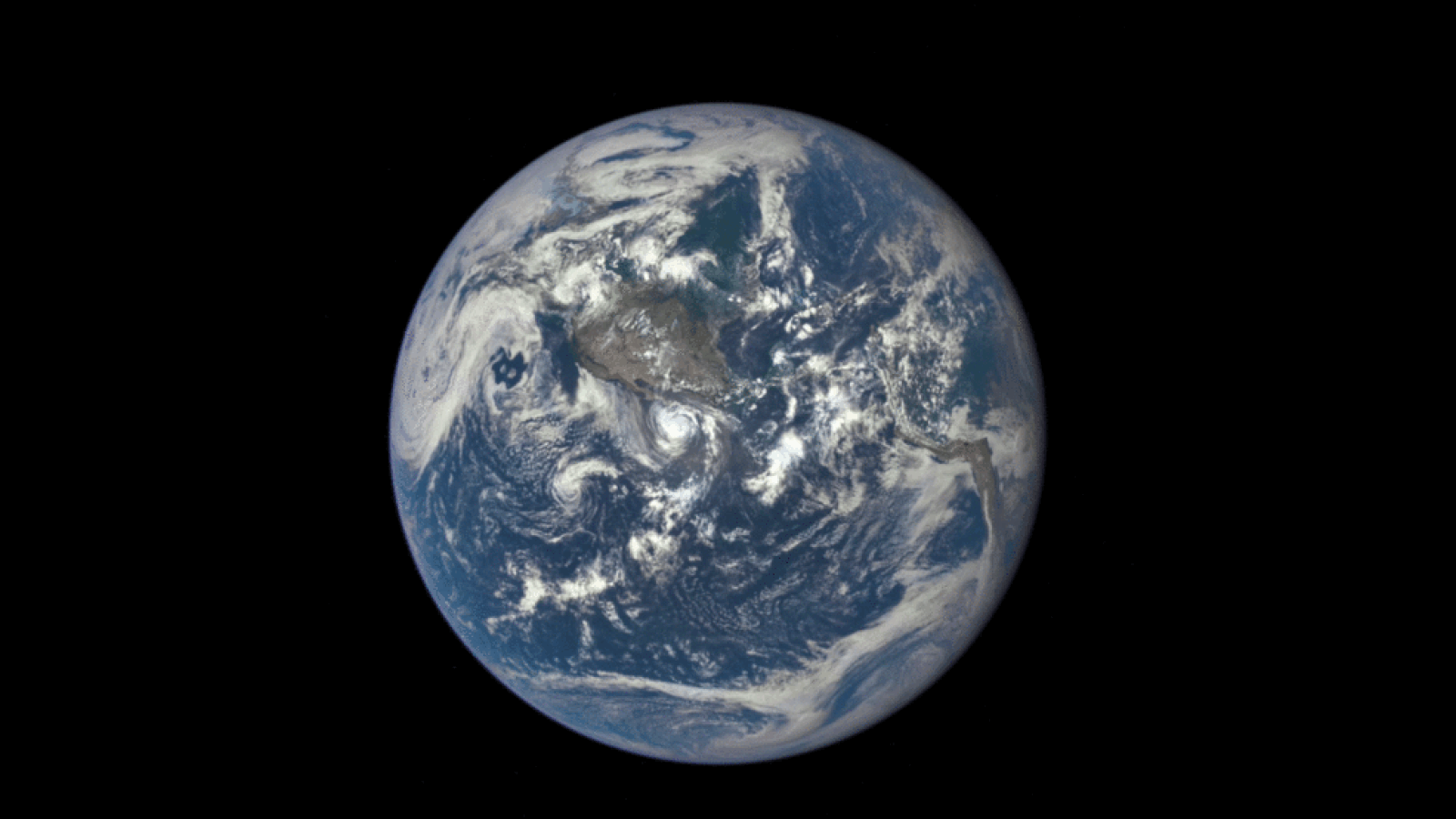
Watch the Moon cross in front of the Earth, as seen from a million miles away
A thing of beauty!
We all need a little cosmic perspective from time to time, and this is as good as it gets. NASA has released this truly stunning GIF of the Moon passing in front of the Earth. The image sequence offers an unprecedented look at the relationship between the two planetary objects, and also gives a detailed look at the rarely seen far side of the Moon.
The resulting GIF is so amazing that it’s almost unbelievable, but the images are completely real. The whole sequence was taken by the Earth Polychromatic Imaging Camera (or “EPIC,” a wonderfully appropriate acronym) on the DSCOVR satellite that was launched in February.

From the Earth to the Moon: 1865/1968
[youtube_sc url=“https://www.youtube.com/watch?v=KKZf5Ycf6nc” title=“From%20the%20Earth%20to%20the%20Moon:%201865%2F1968”]
How does science fiction become science fact? Often the link between art and science can be hard to pin down. It can be unclear if science fiction is actually influencing science or merely observing it, giving the public sneak peaks into the implications of scientist’s work.
But some work of science fiction create direct links to the future. As a young man in Russia, Konstantin Tsiolkovsky read a translation of Jules Verne’s ‘From the Earth to the Moon.” And although Verne’s plan to get to the moon wouldn’t have worked, the novel had just enough science mixed in with its romance to make the central idea seem plausible. Tsiolkovsky became obsessed with the idea of spaceflight, and his life’s work created the foundations of modern rocketry.
One hundred years after Verne wrote his novel, a group of individuals who had been inspired by Verne’s fantasy as children launched a voyage to the moon.

Astronomers find star with three super-Earths
Astronomers said Thursday they had found a planetary system with three super-Earths orbiting a bright, dwarf star — one of them likely a volcanic world of molten rock. The four-planet system had been hiding out in the M-shaped, northern hemisphere constellation Cassiopeia, “just” 21 light years from Earth, a team reported in the journal Astronomy & Astrophysics. Super-Earths have a mass higher than Earth’s but are lighter than gas giants like Neptune, Saturn or Jupiter. They can be made of gas, rock, or both.
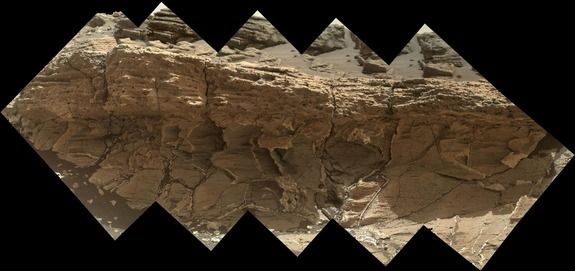
NASA’s Curiosity Rover Eyes Weird Rock On Mars
NASA’s Mars rover Curiosity went out of its way to investigate a rock the likes of which it has never seen before on the Red Planet. Measurements by Curiosity’s rock-zapping ChemCam laser and another instrument revealed that the target, a chunk of bedrock dubbed Elk, contains high levels of silica and hydrogen, NASA officials said. “One never knows what to expect on Mars, but the Elk target was interesting enough to go back and investigate,” ChemCam principal investigator Roger Wiens, of Los Alamos National Laboratory in New Mexico, said in a statement.
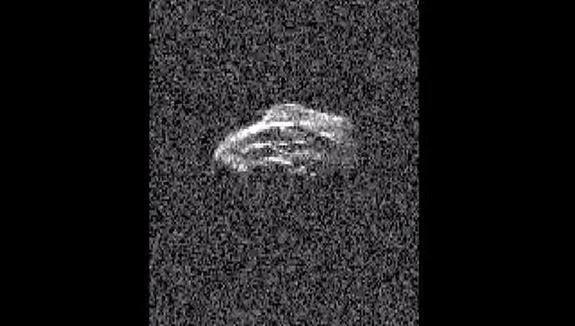
‘Trillion-Dollar Asteroid’ Zooms
It’s asteroids like these that will be (and to a certain extent already ARE) the economic engine that powers the first wave of human expansion from our homeworld out into the vast, unimaginably resource rich expanse of the greater solar system.
The near-Earth asteroid is an intriguing candidate for mining, said representatives of the company Planetary Resources, which is hoping to begin these activities in the coming decades. Previous studies by Planetary Resources estimated that 2011 UW158 contains about $5.4 trillion worth of platinum, an element that is rare on Earth.

100 Year Starship Announces the Canopus Award for Interstellar Writing
100 Year Starship (100YSS) today announced the establishment of the Canopus Award, an annual writing prize recognizing the finest fiction and non-fiction works that contribute to the excitement, knowledge, and understanding of interstellar space exploration and travel.
100YSS, led by former astronaut, engineer, physician and entrepreneur Dr. Mae Jemison, is an independent, long-term global initiative working to ensure that the capabilities for human interstellar travel, beyond our solar system to another star, exist within the next 100 years.
“Imagination, varied perspectives and a well told story are critical to advancing civilizations. In particular, beginning with the simple question ‘What if?’ pushes us to look beyond the world in front of us and to envision what could be, ought to be and other realities,” said Dr. Jemison. “Both science fiction and exploratory non-fiction have inspired discovery, invention, policy, technology and exploration that has transformed our world.”
The award is named for the second brightest star in the night sky, Canopus, which connects humanity’s past, present and future through fact and fantasy. Over the millennia Canopus not only heralded planting seasons in the Rift Valley, but was a major navigation star for everyone from the Bedouin of the Sinai and the Maori of New Zealand to deep space probes like Voyager. Just as Canopus has helped explorers find their way for centuries, great writing —telling a story well ––is a guidepost for current and future interstellar achievement.
Canopus Award program manager and writer Jason D. Batt notes that, “100YSS is launching the awards at a particularly fortuitous time. The recent announcements of Kepler-452b exoplanet, major financial support of searches for extraterrestrial intelligence and the space probe New Horizons close encounter with Pluto and the amazing images it is generating highlight how we all look up and dream of what’s out there. The Canopus award celebrates that passion that is common to the public, researchers and science fiction fans alike.”
Canopus awards will be made in two categories. The first category is Previously Published Works of Fiction with an award made for Long Form (40,000 words or more) and one for Short Form (between 1,000 and 40,000 words). The second category is for Original Works based on this year’s 100YSS Public Symposium a theme “Finding Earth 2.0”. An award will be made for Short Form Fiction (1,000–5,000 words) and one for Short Form Non-fiction (1,000–5,000 words).
100YSS is currently accepting submissions for original works and nominations for previously published works July 28 through August 31, 2015. The Public is invited to nominate previously published works.
Winners will be announced and honored during 100YSS’s annual public symposium, October 29-November 1 in Santa Clara, California.
For more information about award criteria, nomination and submission, visit http://100yss.org/initiatives/canopusaward. To nominate or submit works to the Canopus Award, visit http://www.bit.ly/canopusaward.
- ### -
ABOUT 100 YEAR STARSHIP
100 Year Starshipâ (100YSS) is an independent, non-governmental, long-term initiative to ensure the capabilities for human interstellar flight exist as soon as possible, and definitely within the next 100 years. 100YSS was started in 2012 with seed-funding through a competitive grant from DARPA (Defense Advanced Research Projects Agency) for the purpose of fostering the type of explosive innovation and technology and social advances born from addressing such an incredible challenge. To foster such innovation, 100YSS engages in collaborative international programs and projects in research and innovation, science, technology, engineering and mathematics (STEM) capacity building, entrepreneurship and education projects with and between organizations, companies, universities and individuals. Based in Houston, TX, 100YSS recently opened an affiliate in Brussels, 100YSS@EU and is in the process of developing affiliates in Africa and Asia.
About the 100YSS 2015 PUBLIC SYMPOSIUM
The 100YSS Public Symposium is a powerful four-day event of global, transdisciplinary experience of imagination, hands-on programs, thought-provoking discussions and action on the frontiers of science, civilization, space, technology, society, music, art and our present and future. The Symposium brings together experts, enthusiasts, students, celebrities, innovators, educators, and thought leaders from around the world. 2015 is the fourth Symposium and is themed around “Finding Earth 2.0”—how both the process to discover and the definitive identification of a planet outside our solar system capable of supporting Earth-based life will be game changing across the spectrum of human activities.
100YSS is part of the Dorothy Jemison Foundation for Excellence. For more information, visit www.100yss.org. To register for the 2015 Symposium, visit http://2015.symposium.100yss.org.
Find us on social media:
Facebook: www.facebook.com/100YearStarship
Twitter: @100YSS
PDFS:
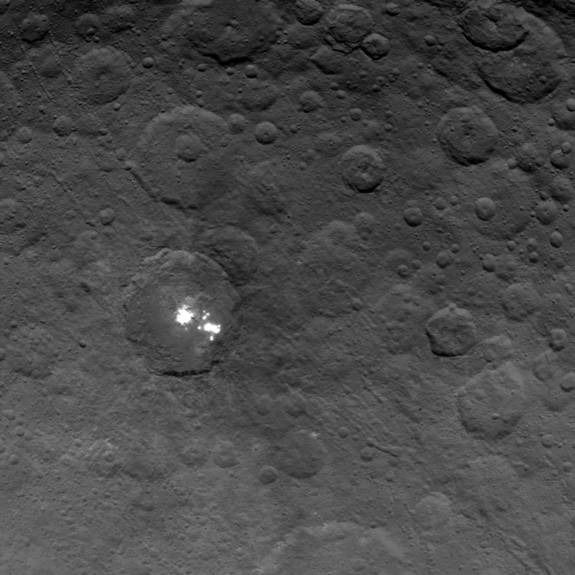
Strange Bright Spots on Ceres Create Mini-Atmosphere on Dwarf Planet
The investigation into the dwarf planet Ceres‘ mysterious bright spots has taken an intriguing new twist. The famous bright spots at the bottom of Ceres’ Occator crater appear to be sublimating material into space, creating a localized atmosphere within the walls of the 57-mile-wide (92 kilometers) hole in the ground, new observations by NASA’s Dawn spacecraft suggest.
